#sphagnum bog
Text
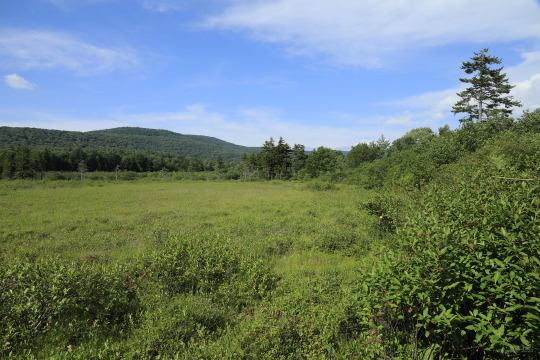
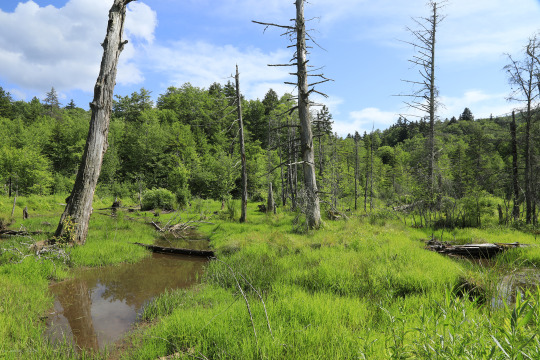
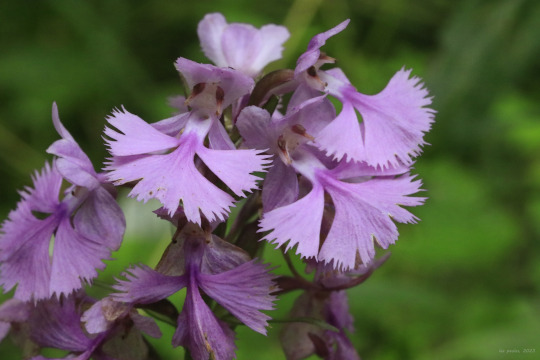
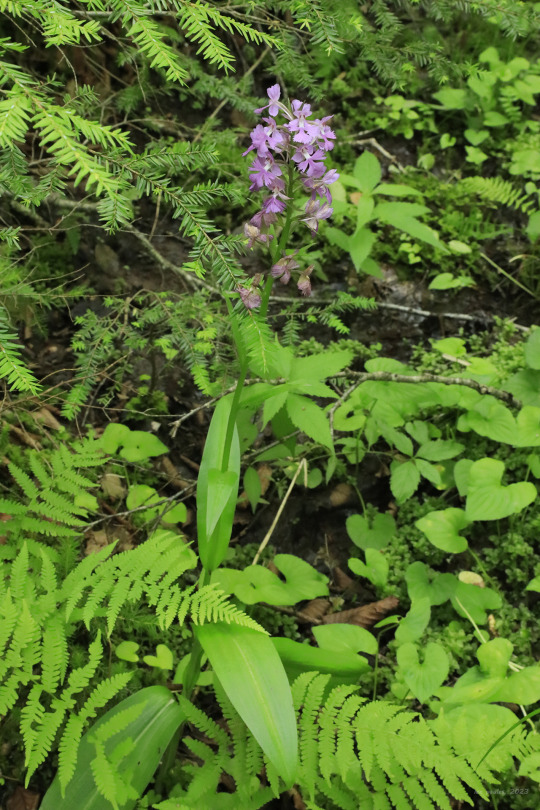

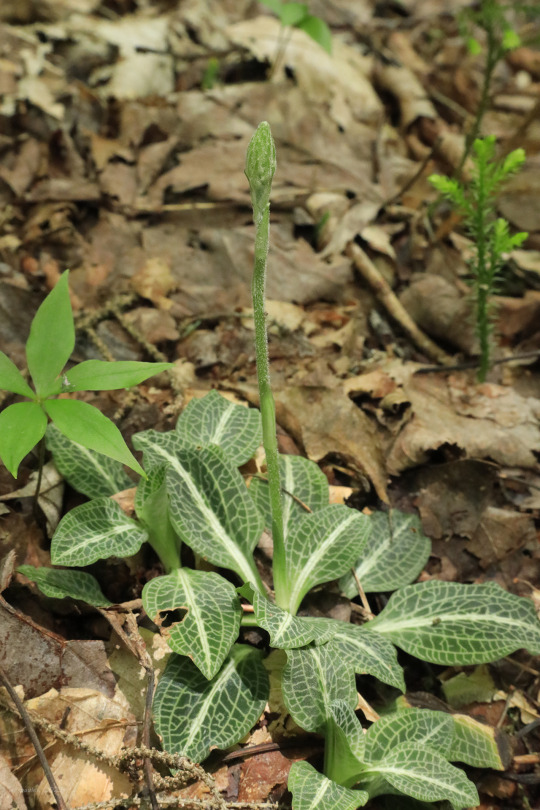
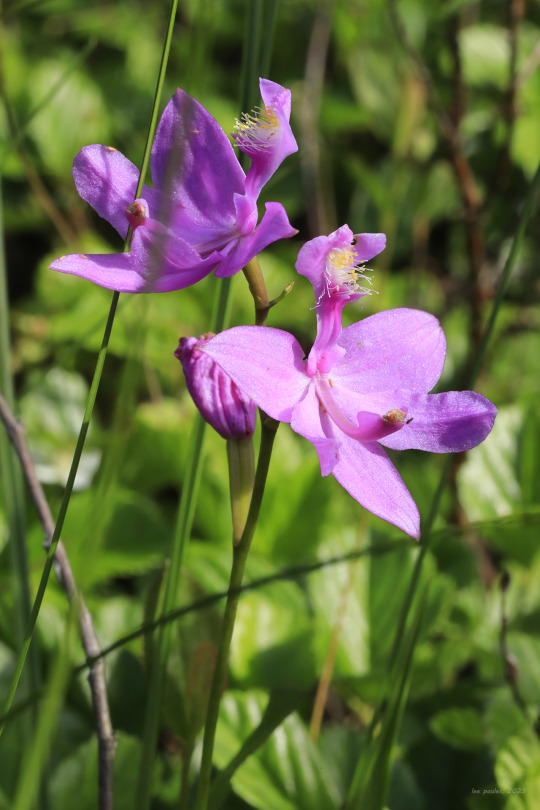
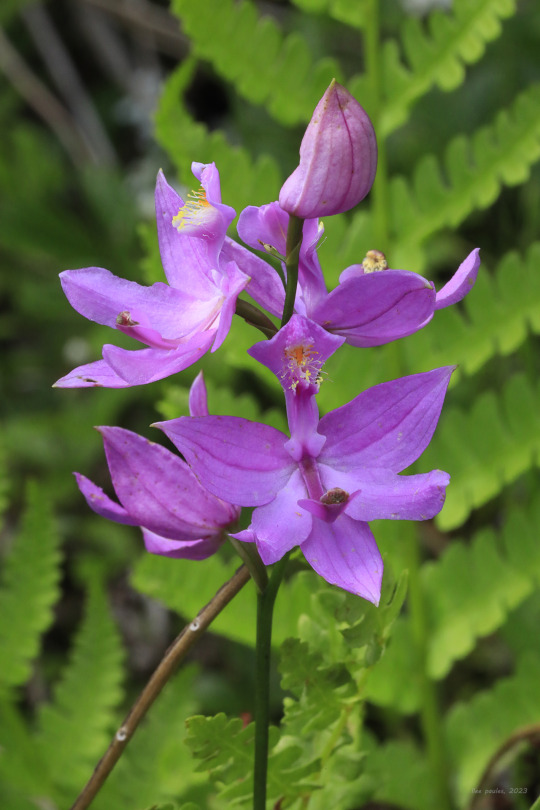



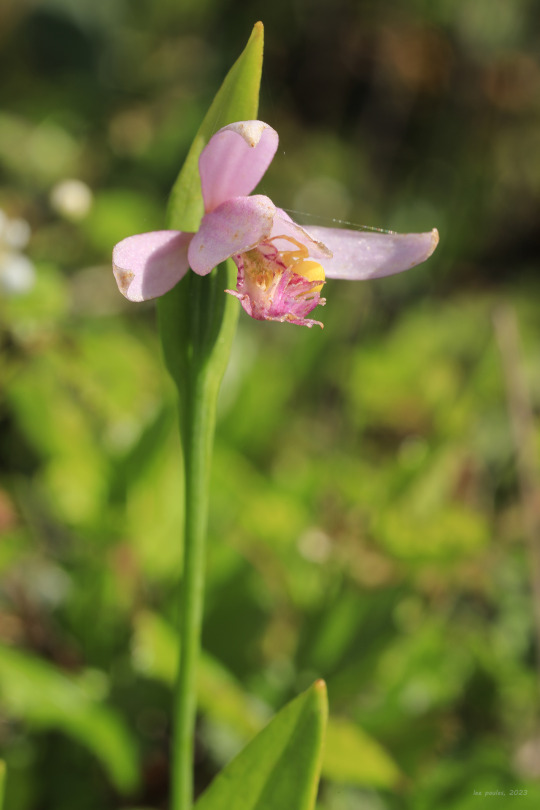

Part 1: Early Summer Wildflower Palooza, Cranberry Glade. It's orchid week at Cranberry Glades! Ok - the event may not be quite as exciting as Shark Week on Discovery, but plant nerds such as me experience something approaching tingly nipples at the prospect of getting up close and personal with grass pinks and snakemouths. A sampling of the many orchids now in bloom . . .
From top: greater purple fringed orchid (Platanthera grandiflora), a tall, leafy-stemmed beauty with clustered, intricately-fringed lavender flowers; downy rattlesnake plantain (Goodyera pubescens), a common terrestrial orchid of eastern woods with a striking, reticulated pattern in its leaves (this one is getting ready to bloom); the flamboyantly-beautiful tuberous grass pink (Calopogon tuberosus var. tuberosus), whose nectarless flowers deceptively imitate the magenta color of those of other bog plants, such as meadow phlox (following post), to draw pollinators; a ragged fringed orchid (Platanthera lacera), also known as green fringed orchid, whose fragile, frilly green-white flowers are hard to spot in the bog underbrush; the dainty rose pogonia (Pogonia ophioglossoides), also known as snakemouth orchid, due the tooth-like protuberances on its lower lip (note the sneaky goldenrod crab spider (Misumena vatia) hiding in the flower in the second photo, waiting to pounce on an unsuspecting bee, the orchid's primary pollinator); and northern tubercled orchid (Platanthera flava), another orchid with green-white flowers that can be difficult to spot in the bog underbrush.
#appalachia#vandalia#west virginia#wildflowers#flora#allegheny mountains#monongahela national forest#cranberry glades#wetlands#bog#sphagnum bog#summer#orchids#highland scenic highway#wv route 150#greater purple fringed orchid#downy rattlesnake plantain#tuberous grass pink#ragged fringed orchid#green fringed orchid#rose pogonia#snakemouth orchid#northern tubercled orchid#goldenrod crab spider
110 notes
·
View notes
Text
ROUND 3: 1925 TRISTATE TORNADO (sky) VS SPHAGNUM MOSS (bog)

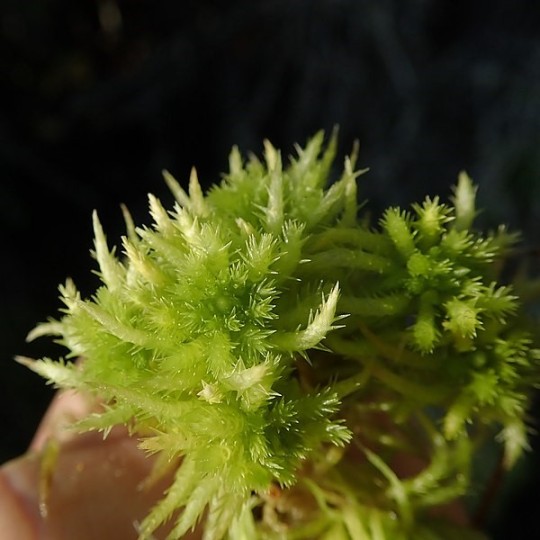
#tournament#now kill#i hope this is the right moss this time T-T#f3#tornado#moss#sphagnum moss#sphagnum#bog#peat bog#smack barm peat wet
405 notes
·
View notes
Photo
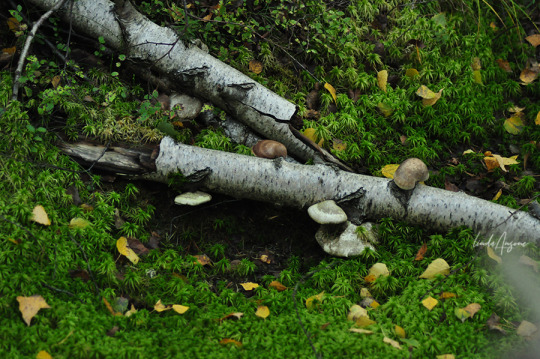


#woods#bog#moss#sphagnum#mushrooms#fungi#polypore#hoof fungus#birch polypore#nature#nature photography#original photographers#photographers on tumblr#birch tree
317 notes
·
View notes
Text
and thus begins the season of 100+ degree heat every single day...
#i will be digging a hole and crawling into it thanks. i will Cover myself with dirt and not come out#the sun is almost completely down and its still over a hundred out. sigh#~its the most wonderful time of the year~#im placing personal bets whether or not itll hit 120 (im strongly betting Yes)#maybe i should go live in antarctica#vibe with penguins. get killed by a leopard seal. you know how it is#instead my options are: the dirt / walk off into the desert and perish#i wake up every morning miserable and sweaty <3 this is so fun <3#so jealous of the puppets rn. they dont have to deal with this#put me on a temperature regulated set bois#my laptop: heat warning in effect#YEAH NO SHIT. HONEY.#gonna need to start using my ceiling fan soon just to get some fuckin Sleep#the ac is not enough during the day#absolutely unprompted#i was wondering 'oh why am i more irritated than normal why am i more fatigued than normal'#OH YEAH. BECAUSE ITS MISERABLE OUT.#melting into a puddle of bog... goo... that's just water. hm.#turning into an actual physical bog#sphagnum and tannins and everything#i wake up. i drag myself out of bed. i sit at my desk and dissolve. rinse and repeat#this has been my routine for Days now <3#i hope yall are having a cooler more tolerable summer!#but given the absolute state of this planet uh! i doubt it! still! i have hope! keep cool guys
57 notes
·
View notes
Text
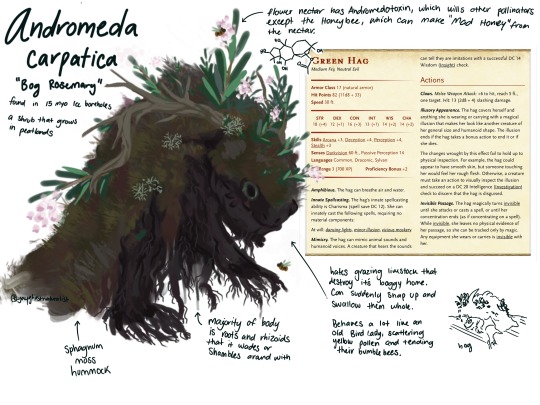
Reskinning creachers for my dnd character Cyphe to summon. She’s a necromancer for plants Paleobotanist! I’ve redone her spells with some botany flavor except the conjure/summon ones.
My methods: buy manual on trees and shrubs w 10,000 species. Read through all the A’s. Pick some cool ones, turn ecology into character notes. I need to mod these a bit with my dm.
#dnd art#botany#bog rosemary#dnd creature#dnd plant creature#botanical reskin#sphagnum#peat#hummocks#dnd#art#artists on tumblr#andromeda carpatica#paleobotany#concept sketch#concept art#creature#creature design#plant creature#hag#dnd hag
82 notes
·
View notes
Text
a 2400 year long nap in a raised peat bog would fix me
#i wanna feel the sphagnum hug me and the juices work me to leather#just a really nice nap you know can you imagine being a bog body for a second#a couple of days ago one of my colleagues who is a historian was like RIGHT youre an archaeologist you like human remains i forgot that#one of the funniest things someone has said about me#corp.krax
32 notes
·
View notes
Text

Polytricum Moss (Polytrichum spp.) growing through a bed of red Sphagnum Moss (Sphagnum spp.) in blanket bog
Photo by Alex Hyde
#polytricum moss#polytrichum#moss#sphagnum#sphagnum moss#bog#bog moss#red#red moss#red plants#plants#botanical#plant photography#nature
7 notes
·
View notes
Text
i went to the woods and was so happy i almost cried
#south jersey woods hit different they have a more earthy smell#if you make a joke about jersey and smells i will evaporate you with my mind powers#theres “clean mountainous woodland air” and “down and dirty bog wetlands sticks”#and the latter is my fave forever#THE SPHAGNUM MOSS#THE BABY BLUEBERRY BUSHES
8 notes
·
View notes
Text

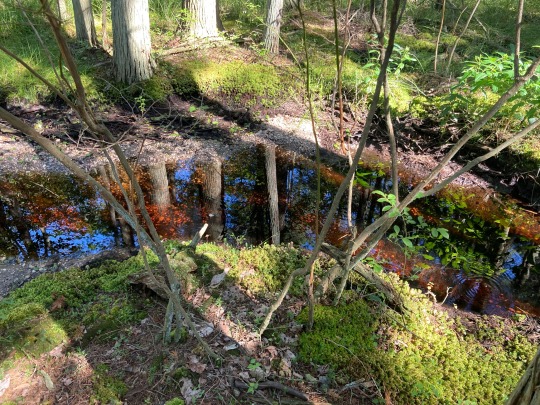
Beavers blocked this stream so the stagnant water became dark with tannins
90 notes
·
View notes
Text

Cursed Moss Fact #001
Peat bogs in Finland regenerate as slowly as 10cm (about 4 inches) PER THOUSAND years. So when ‘mining’ peat, regeneration is discussed on a geologic time scale. Sphagnum (aka “peat moss”) is a genus of moss that occupies 1/3 of all land (or about 3% of the total earths surface). Note, some peat has no Sphagnum, or is made of other mosses and detritus.
One peat bog in the Catskills is between 14,700 and 15,100 years old (source).
The peachy-yellow and pink moss in the photograph is Sphagnum growing in a mini-bog in a greenhouse. Read more about mosses in Bryophyte Ecology by Janice Glime (link on pinned post on our main page)
#mosscore#cursed moss facts#moss fact#moss#sphagnum#bog#peat bog#botany#bryology#plant facts#botany facts#moss facts#science
29 notes
·
View notes
Photo
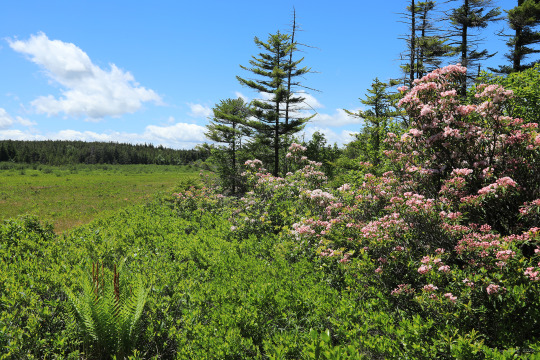
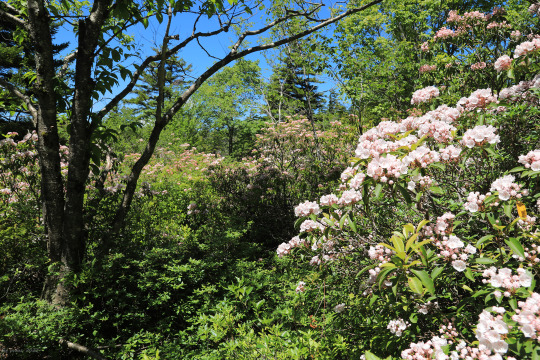
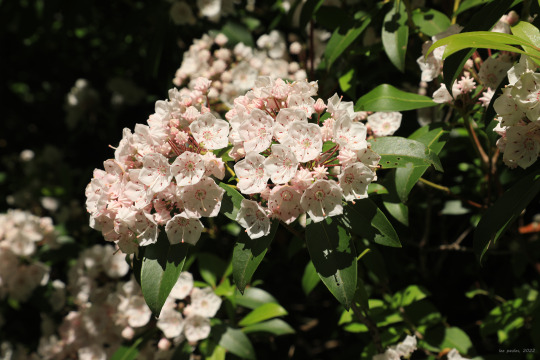
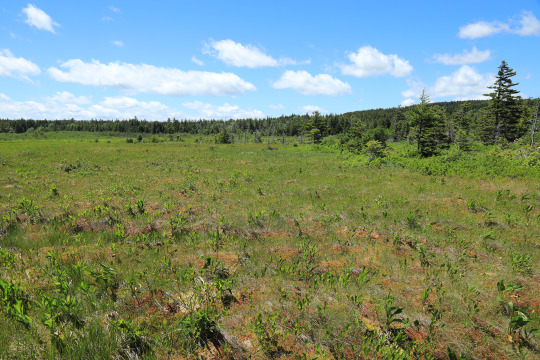
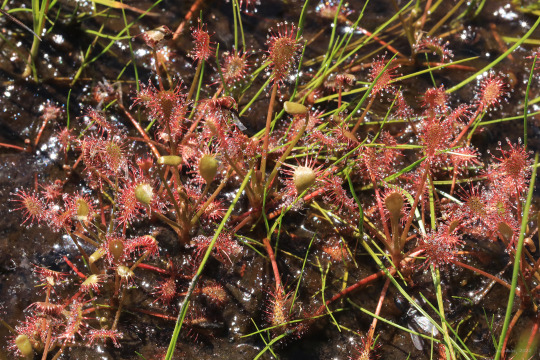
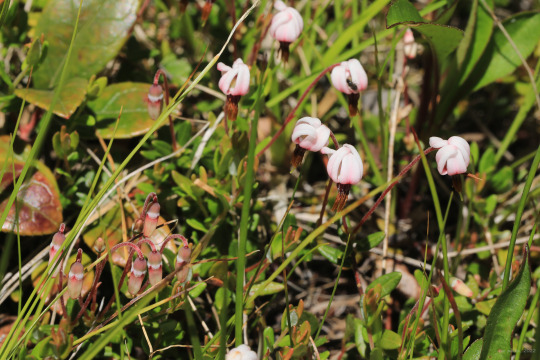


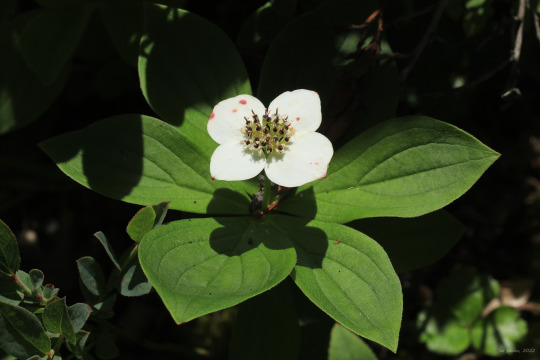
Dolly Sods and the adjacent Flat Rock and Roaring Plains sprawl across a rugged plateau at the edge of the Allegheny Front, which drains much of the moisture from passing clouds. The water drains poorly on the plateau, resulting in sphagnum bogs that host a variety of plants and animals uniquely adapted to the cool, acidic environment.
From top: Mountain laurel (Kalmia latifolia), which in combination with blueberry, huckleberry and minniebush forms impenetrable thickets along the edges of the bogs; spoonleaf sundew (Drosera intermedia), also known as spatulate-leaved sundew, one of two species of carnivorous sundew to grow here; small cranberry (Vaccinium oxycoccos), also known as bog cranberry, whose tiny flowers have strongly recurved petals; possumhaw viburnum (Viburnum nudum), also known as wild raisin due to its vibrantly-hued fruits in the fall; canaan fir (Abies balsamea var. phanerolepis), a recognized subspecies of balsam fir known from only a few locations in West Virginia and Virginia; and bunchberry (Cornus canadensis), which grows prolifically in the dappled sunlight along trail edges.
#appalachia#vandalia#west virginia#allegheny mountains#allegheny front#dolly sods#dolly sods wilderness#flora#wildflowers#wetlands#sphagnum moss#peat bog#sphagnum bog#kalmia latifolia#mountain laurel#drosera intermedia#spoonleaf sundew#spatulate-leaved sundew#vaccinium oxycoccus#small cranberry#bog cranberry#viburnum nudum#possumhaw#wild raisin#smooth witherod#abies balsamea var. phanerolepis#canaan fir#cornus canadensis#bunchberry#monongahela national forest
136 notes
·
View notes
Text

#Drosera rotundifolia#sundew#plantphotography#plantlover#plant flowers#plant photography#plant#plantblr#plantlife#fluffy moss#mossyforest#mossy woods#green moss#sphagnum moss#Sphagnum#bog moss#green energy#beautiful#beautiful photos#my photo#photography#photooftheday#naturecore#photoart#forest#woods#forest view#walking in nature#nature#goblincore
38 notes
·
View notes
Text
I guess I really am a Giant Plant Nerd, because when the opportunity to walk around a bog in the rain in October came up, I was *ecstatic* and couldn't stop taking pictures of pitcher plants
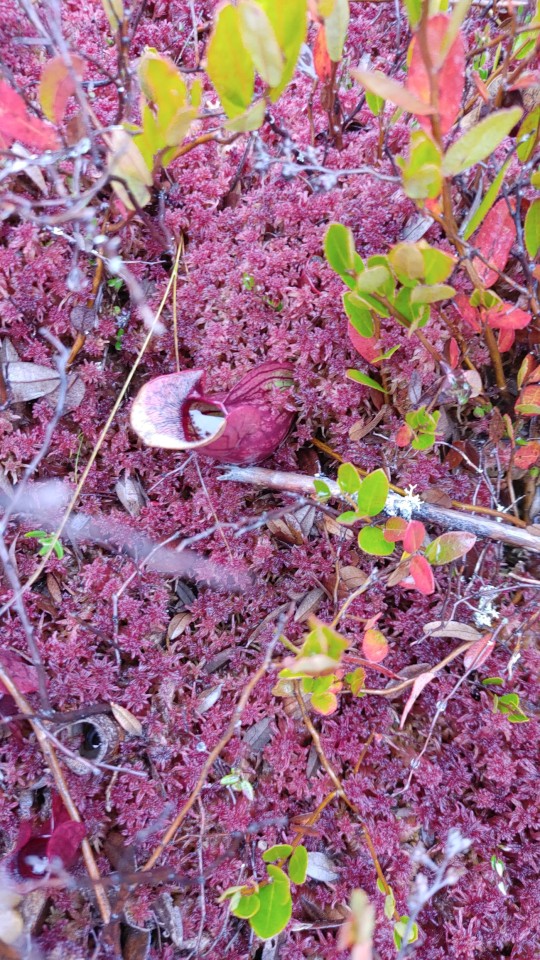


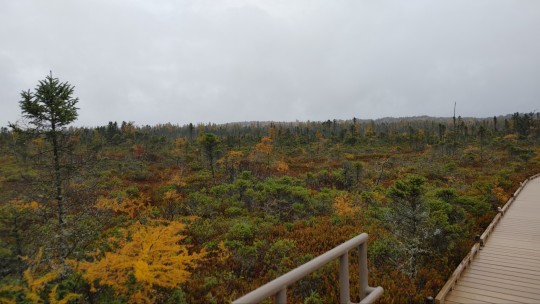

2 notes
·
View notes
Note
Are you a human or are you secretly a bunch of land lobsters in disguise
deep sea isopods, actually- imeanwhat. huh. man the freeway is Loud out here, can't hear a damn thing. nature is beautiful
#nah im kidding#im a sapient bog with wires plugged into the sphagnum & connected to a laptop. havent you seen my Name-#rambles from the bog#also im so glad i looked up land lobsters. little friends...
24 notes
·
View notes
Text

Flytrap seedlings getting their first traps.
#garden#plants#bog garden#carnivorous plants#venus fly trap#dionaea muscipula#flytraps#seedlings#germinate#germination#sphagnum moss#baby plants
2 notes
·
View notes
